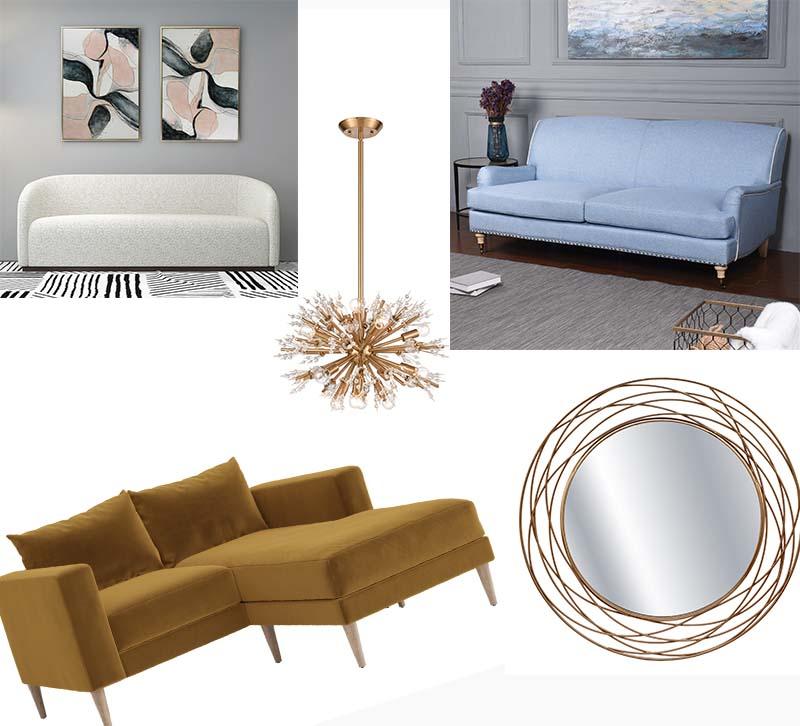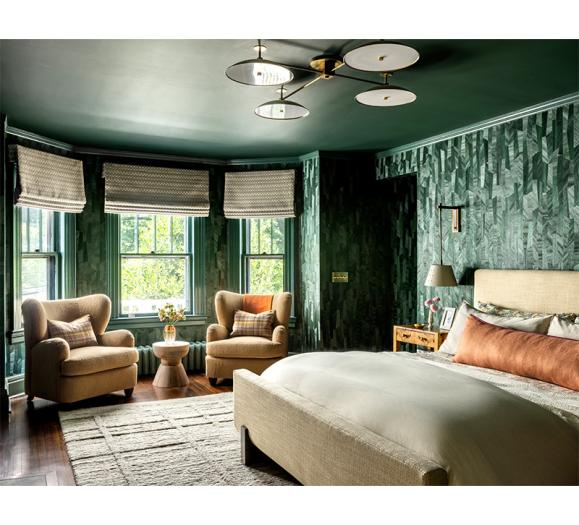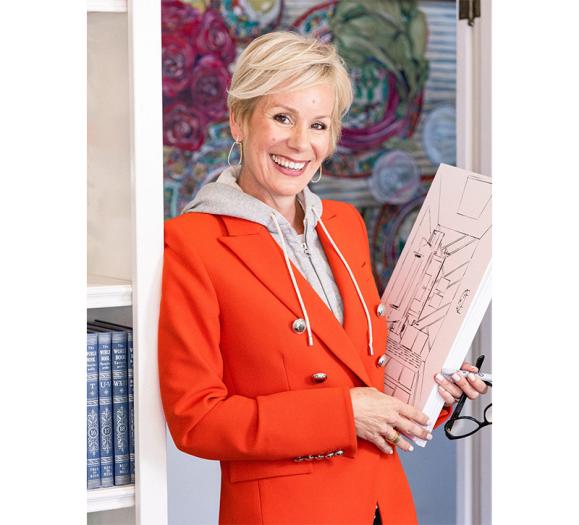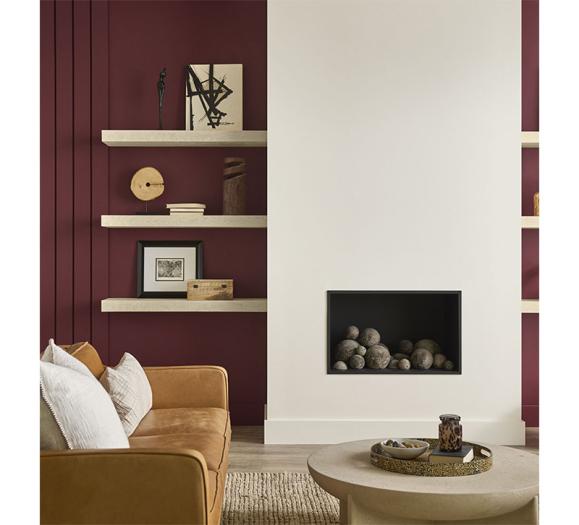While small space living is often associated with apartment living and smaller, starter-type homes, in today’s environment, small spaces can be found anywhere. With people working from home, and more family-at-home time, even the most open concept-driven of homeowners are craving some privacy, and that’s often found in a smaller area.
For today’s consumer, that smaller space — whether apartment or a personal retreat — needs to function well for it to be useful as well as aesthetically pleasing, and home furnishings companies have risen to
the challenge.
“Every space has to do double duty. Everything has to be usable, even the decorative pieces,” says Dann Foley, President of DANN Inc., Co-founder of Foley & Stinnete Interior Design, and the force behind Stylecraft’s new home furnishings collection, Dann Foley Lifestyle. Tiny homes and smaller spaces had fallen out of popularity, Foley continues, but COVID changed that back. “Homes aren’t getting bigger, and now we need those [personal] spaces. We find we are creating rooms and dedicated spaces that have a certain amount of privacy,” he says. Bigger Can Be Better When designing a small space, one mistake that a consumer might make, and a designer or retailer can help them fix, is incorporating smaller furniture pieces and accessories. “You need to overscale at least one major piece in the room,” Foley says. “Otherwise everything feels diminutive, and nothing appears impressive or comfortable.”
While this can be challenging to achieve, it is possible, as comfort and functionality need to be the focus of the furnishings. Foley has achieved this “overscale effect” while delivering upholstery that fits within a smaller space with a new sofa he introduced in his Stylecraft collection. While only 60 inches in length, it also has a 42-inch depth, which gives the appearance of scale. “To make sure it [the sofa] was luxurious for smaller spaces, we added the depth. You can really curl up in this sofa,” he says. You can also use decorative pillows, a sure way to warm up a space, and you don’t have to take them off the sofa to sit in it, Foley continues. Avoiding that type of clutter is another way to ensure a smaller space remains comfortable and luxurious. If even a 60-inch sofa won’t work in the space, an oversized chair or even a round dining table tucked in a corner of the room can achieve a similar effect. The goal is to have a focal point that anchors the space and build around that. Other furnishings can be curated around that anchor piece in a small space. Foley suggests bunching tables and ottomans with storage, for example. Again, functionality is a key driver when considering furnishings that fit in a smaller space. “Look for pieces that can be moved, shifted, layered. Pieces in a small space need to do double duty,” he notes.
Mindy J. Marx, Product Development and Key Accounts for Sagebrook Home, agrees that functionality in furnishings is important in small spaces. Sagebrook has a number of options designed to accommodate small space living, including its recently introduced upholstery collection. She suggests bar carts (on casters), nesting tables and consoles to replace entertainment units, because of the storage capabilities. “Bar carts are one of these pieces that can be adaptable,” she says. “They can get a lot more usage than people might consider.” For example, a bar cart makes an excellent side table that can then be moved and used for its original purpose when entertaining. Bold Accents Add Interest Where larger furnishings aren’t possible in a smaller space, Foley suggests large wall art or colorful wallpaper to warm up a room as these elements add interest, don’t take up floor space, and can make a room feel larger by bringing the eye up. He suggests that we shouldn’t be afraid of color in small spaces as that can create visual interest.
Marx agrees that wall art and accessories can add that focal point and warm up a space. “You can layer your colors with wall art,” she says, adding that mirrors are also a wonderful decorative accessory for warming up a space and even making it appear larger. “Mirrors bounce light around the room, adding light and color,” she says. “It’s not about looking at yourself. They add space and dimension, and they can be layered in with art.” Sagebrook Home, which focuses on complete assortments that deliver on a variety of styles, features mirrors and wall art that work well in small spaces. The company is also known for its accessories, many of which offer storage. “Everything has to serve a purpose,” Marx continues, suggesting such accessories as decorative boxes, trays and other pieces that serve a function along with adding style.
Foley also likes raised platforms that can add height and house curated accessory collections, something that’s important in a small space. Avoiding clutter is key to a comfortable environment so he suggests where decorative accessories are included, curate those collections and keep them together. Light It Up Like the mirrors bringing in light, layering in good lighting is important to small space design. Carla Regina, Co-founder of Regina Andrew Detroit, known for its lighting, accessories and furnishings, says “Layering various types of lighting is important even in a small space. Overheads, spotlights, chandeliers and sconces should all be considered, but what I really like to incorporate in a small space is a mini lamp. Smaller lamps that might be dwarfed in a larger room can make a statement in a small bedroom, pantry or den. It’s a great place for the homeowner to splurge on higher-end materials as well.”
Regina also suggests that floor lamps with smaller bases that can slip under sofas or chairs and have articulating arms are helpful as they don’t take up much space and they allow the light to be moved about a room. “Functional task lighting is useful in a small space,” she notes.
For decorative lighting, such as chandeliers, which can also become an artistic focal point in a space, Regina suggests the one dimension to measure is the height of the room. “Proportions are key no matter what the size of the space. It’s subjective to the designer and the homeowner with no set rules except when it comes to height,” she says. “Consider your ceiling height when selecting a fixture. Do your research and measure before committing.”
Foley agrees that more is better when it comes to lighting a smaller space. You want decorative and task lighting. “You don’t want to rely on just the overhead lighting. It will strain your eyes,” he notes. Small spaces are a design opportunity, even in bigger homes. Adding warmth and luxury can be as simple as hanging a mirror, choosing a focal point and lighting up the space. “In any room, telling a story is a really important part of the design,” Foley says. “In a small space, limit the story. You don’t have to live starkly with minimalism but you have to be smart about your choices.”







